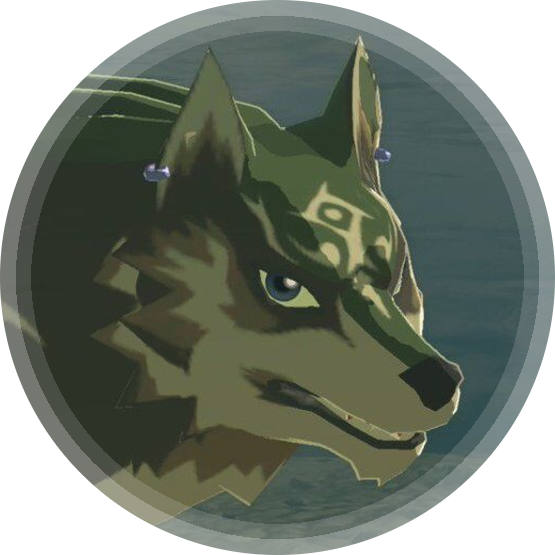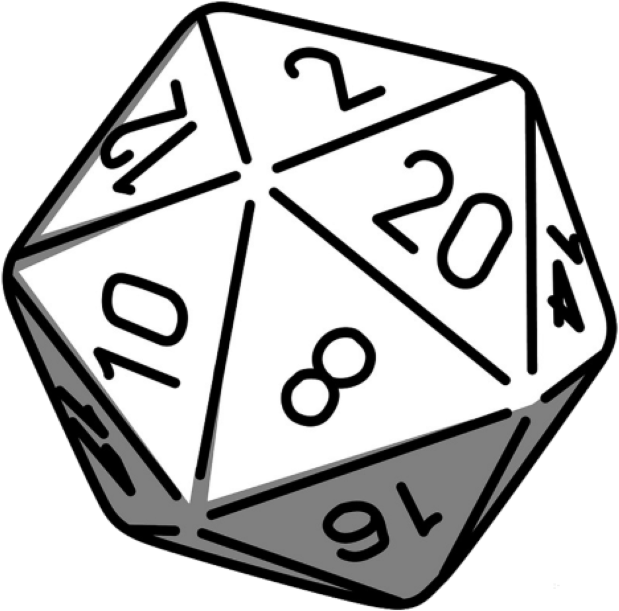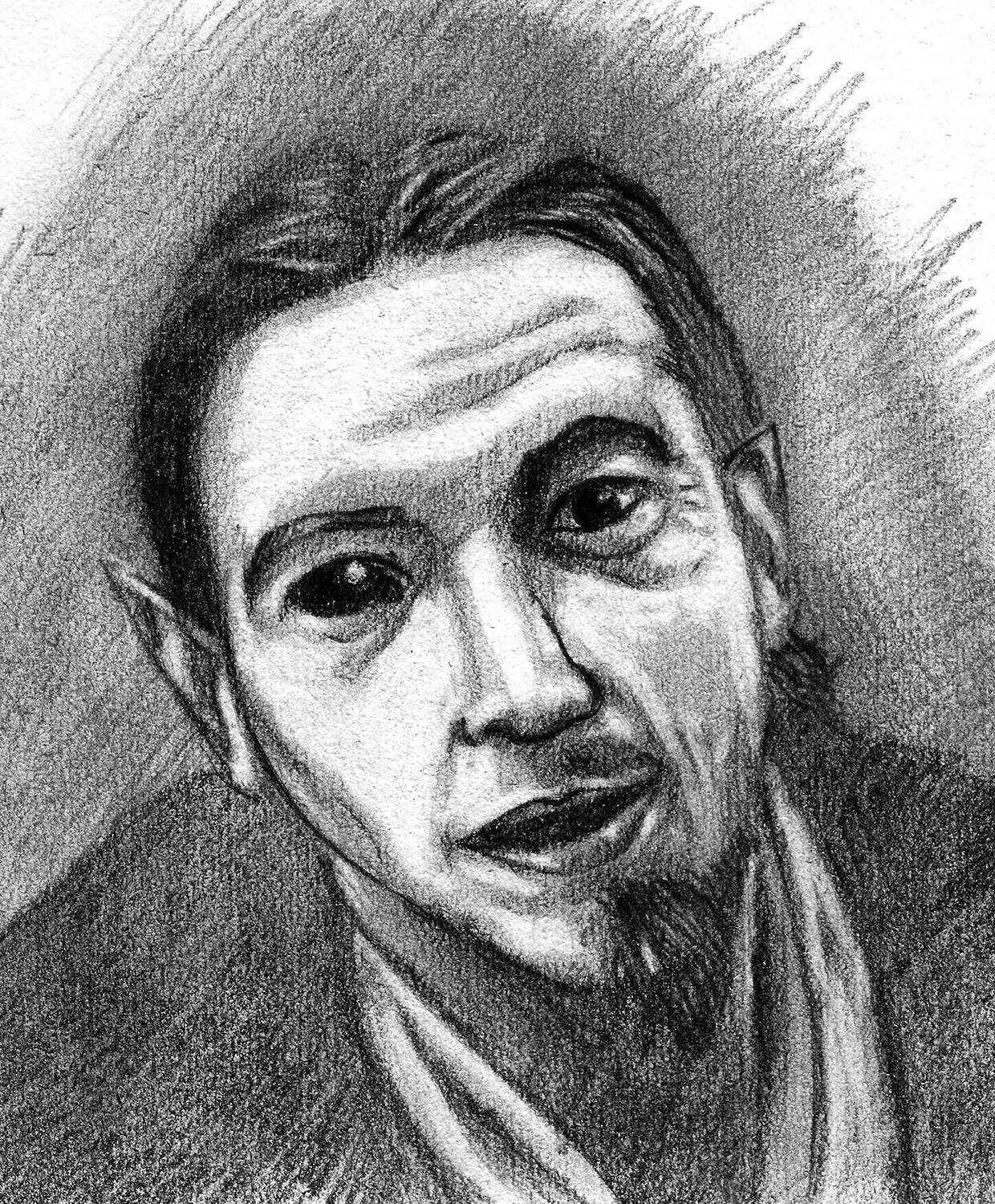- original source: https://www.tumblr.com/firebirdeternal/616605850794065920/you-know-whats-more-fun-than-worldbuilding-that
The post, in case you don’t want to click on an offsite link:
You know what’s more fun than worldbuilding that makes some fantasy races EEEEVIIIIIIILLLLL???
Worldbuilding that gives the different races cultural differences that help explain why there’s a lot of conflict between them:
Goblin culture doesn’t have a concept of “Property”. A stick on the ground and a tool in a locked shed are equally up for grabs if a thing needs doing. They casually take and leave things all over their communities, eat from communal pots, and genuinely Do Not Understand why the Core Races are so Angry and prone to Violence all the time.
Consequently Goblins who live near Core communities develop a reputation as “Thieves” despite not even having a word for that. (The closest word they have is more like “Greedy” and it means a person that hides things so nobody else can use them, and it’s a surefire fight-starter to call a Goblin that)
Common Orc Spiritual beliefs hold that a Soul can only grow stronger by overcoming Challenges in life, and see intruding on another person’s Challenge unasked for as not just Rude, but Deeply Harmful. You’re Stealing their chance to Grow. Asking for help is deeply personal and doing so can be both a way to grow closer with them or a too-personal intrusion, depending on your existing relationship with them. An exception is Children, as far as most Orcs are concerned, all Children are fundamentally the responsibility of the Whole Community, regardless of whose child they are, or even if said child is an Orc at all.
This means that Orcs who live near Core neighbors often seem Rude and Standoffish if not outright hostile, because they neither ask for nor offer aid even in times of trouble, and respond to unasked for aid themselves with Anger. There are even rumors that they Steal Children, because if an Orc finds a child lost in the woods they’re pretty much immediately going to start feeding it, and if they can’t find where to bring it back to, or it doesn’t seem to be well cared for, they’re just gonna keep it.*
I just love the idea. It’s a lot more believable and nuanced than the “this race is inheritely evil/good/dumb/advanced for no particular reason” some RPGs pull off, and makes certain allegedly “evil” races actually playable if you’re not relying on a system that already has them as playable characters.
Do you have any similar homebrew concepts for your versions of Goblins, Kobolds, Orcs, Dwarves etc.?
I have a fun headcanon about dwarves: Their bones contain a toxic substance they call Stone-Marrow. Dwarves take pride in a potent Stone-Marrow, as any achievements a dwarf has are even more impressive if they were under the effects of a powerful poison at the time. This also ties into dwarven drinking culture, as alcohol resistance is a sign of strong marrow.
Stone-Marrow is even tied into dwarven funerals. When a dwarf dies, their bones are used to forge metal tools that are handed down to their descendants. The Stone-Marrow causes the metal to grow strong in ways other races can’t recreate, no matter how hard they try. Because the objects made from a dwarf are decided by the dwarf, they are said to carry the will of that dwarf with them. All of this combines to mean that when a dwarf fights with a steel axe left to them by their grandfather, they are literally fighting with their grandfather in their hand.
The only restriction on metals used for dwarven funerals is gold, as only royalty can be turned into dwarven gold. The throne and crown is made of dwarven gold, giving the current king a feeling for the support given by the kings of the past, and the weight of responsibility their position comes with.
So if you ever need an insult to give to an elf, call them “marrow-less!” But never insult a dwarf’s weapons in front of them.
Yo, you have no idea how much I like this
I feel like I need to steal this for my campaign, if I ever get a chance t run again…
Headcanon forever accepted. This is aweseome!
This reminds me a lot of the conflict between dwarves and trolls on the Discworld. Essentially dwarves like to mine and follow seams of valuable minerals. Trolls are silicon based lifeforms that are essentially walking, talking mineral seams. A troll will be very annoyed to wake up to a pickaxe in the ear, and a dwarf will be very annoyed that the seam they found decided to stand up and kick them in the rocks. Do this for a few generations and all of the sudden you have the Battle of Koom Valley brewing. Again.
I miss Terry Pratchett
The thing is, this is still tying culture to race. If there is no racial essentialism to the traits you describe, then there’s no reason to say that some goblin cultures / sub-cultures do understand the concept of property - and disagree with what they understand to be stealing. Etc.
deleted by creator
Sure, it adds nuance - and if that’s all you care about then you’re all set. But it doesn’t address The Problem, which is painting “races” as monoliths with essential characteristics. Just because you can explain why All X Are Evil, doesn’t solve for it being boring/lame/tending-toward-offensive that they all are. Seems like we dealt with this in other contexts, why not include it in lore?
Think of it more as culture tied to community. A village of goblins is going to behave one way, but a goblin raised in a human city will behave another way. Yes there are characteristics that are generally associated with a species (I shy away from “races” generally, too loaded of a word). But that’s just because those species generally form their own communities. Are all goblins like this? Of course not. Are all goblins that the small town cleric has met like this? Yes.
It’s not really that different from a native Californian thinking a native New Yorker is rude and interrupts all of the time, and the New Yorker thinking the Californian doesn’t engage in conversation, simply because their conversational speeds differ enough that it creates underlying tension. In that example, did I paint all New Yorkers as rapid speakers? Yes. Is it generally true of native New Yorkers? You tell me.
There will always be generalizations, and there will always be nuance that disproves the generalization. When telling a story the secret is knowing WHY the generalization exists and how the character relates to it.
You are saying what I’m saying. This is not the traditional view.
I think in most cases when you zoom in on one of these admittedly poorly named ‘races’ in D&D, you see the breaking of molds almost more often than not. What they allow is an extreme contrast in behavior being packed into a smaller terrain that isn’t simply viewed as another community by the surrounding people. A bunch of kobolds living in the mountain near your village isn’t seen as having bad neighbors, it’s seen as an infestation. The kobolds, likewise, don’t view the human village the same way they view another kobold settlement. That, in and of itself, highlights some of the problems with an expanding civilization, but it also provides smaller contexts that can clash heavily against one another within the ‘established’ territories of various countries.
You do have many examples in D&D of cities populated by a huge diversity of different types of creatures. Looking at Forgotten Realms, most cities aren’t limited to just humans or just dwarves or elves. Those exist, but they’re not what’s most common. You’ve even got places like Westgate where humans, elves, halfings, and what not are living with orcs, drow, ogres, bugbears, and all sorts of other folks that would typically be attacked on sight in otherwise similar cities.
There’s a lot of nuance and room for nuance in D&D. Even in the case of outer-planar beings like fiends, who are petitioners (dead people living an afterlife) from a plane associated with a particular alignment (evil in this case), there are cases where characters have a major turn-around. I’d say that most of the most popular characters are actually subverting some trope rather than living up to it.
The thing is, this is still tying culture to race.
I had a go at breaking past this barrier, and found it extremely difficult. I started with the idea that geography informs culture, and made a split between elves in the frozen South and elves tropical jungles. This left me with half the normal space to write about elven cultures.
So I figured I could do 2-3 cultures per race, and end up with (5 x 2.5) ~13 descriptions of fantasy cultures. But who wants that? I can’t use that much in my own game. Writing because you have to write something makes for bad writing.
Another route is to limit cultures even more. Maybe dwarves and gnomes basically live the same way, as do gnolls and humans. But then it seems odd that gnolls having the mouth of a canine changes nothing about them. If nothing else, their language has to be deeply different, given the lack of lips.
So in the end, I’ve decided to just fill in a very small part of the world, and leave an underlying assumption that elves, humans, and gnolls might do things differently elsewhere.
Thanks for this. I think what you ended up with was the absolute right move. Trying to solidify everything from the top-down, beforehand, seems an impossible task to do well, or with enough foresight to make work across your eventual varied needs. In real world terms it seems sort of Prescriptive, in a vaguely Victorian scientist way; cataloging races instead of meeting people.
I’d imagine working bottom-up, Descriptively, means you can put all of your nuance into a single group or region, per the story you want to tell. You find out who and why, because you meet them on the ground in their actual situation - instead of thinking you can manufacture everything ahead of time in a vacuum. And then the next time your story crosses paths with another such group, you again get to reflect on the individual circumstances that make them even slightly different, and add a new micro culture to your growing canon.
It’s grand, exciting stuff. Thank you!
Yea, ‘bottom-up’ is a great way to put it.
Like, I can still add a totally different gnoll tribe later on in a module, or just add one ‘from the icy South’, and let the GM imply a world without yammering about it.
I think racial descriptions in fantasy games are more like tendencies. Tendencies that often have to do with the environment that each typically grows up in. I thought this was the traditional view, but maybe not.
While there are of course deviations from the norm, it is hard to lay this out in a digestible way. Simplification help readability. NPCs or locations that break these norms seem like a more pleasant way of de-essentializing.
Something that crocodiles do has made them one of the longest lasting species on Earth, specifically by allowing populations to explode after massive disasters.
The way it works is: about 90% of baby crocodiles are eaten by… adult crocodiles. So, when a natural disaster (say) wipes out huge quantities of adults at once, baby crocks find themselves in world mostly without predators that eat them, this living long enough to become adults. These adults go back to eating new babies, preventing the population from running amok.
If you imagine the “evil humanoid species™”—kobolds or whatever—does this, you can imagine why the “good guys” are always surprised at how the “hordes” replenish so quickly after being “culled”. You can also imagine the “culling” of adults erodes and annihilates any culture that might have existed in an endless downward spiral.
But, oh, “that’s OK because they’re cannibals”.
This was developed into a great novel series by Niven, Pournelle, and Barnes called ‘The Legacy of Heorot’. Spoiler - the big, bad creatures are rare…until you kill the adults off. 🙂
Hot damn this is good.
I feel like some of the D&D writers have done a fantastic job of this, even where they have still tacked on the moniker of ‘evil’ as it fits with their system of alignment and planar cosmology. The drow are an especially well developed example of this, essentially taking all the assumptions of a traditional fantasy society and turning them on their heads.
The drow are certainly evil, but they’re not simply evil. They have their own set of values that they typically adhere to pretty fanatically, and a rather alien culture to go with it. The drow have no word for love (ssinssrigg translates to something closer to a possessive fondness), they view successful betrayal as virtuous, and ultimately the advancement of personal power for the glory of Lolth is their greatest ideal. They eat weird lichens, giant crickets, and cave cattle, and drink poison for fun. Despite typically leaning toward chaotic evil, they’re tied into this strict (if fragile) hierarchy that’s ultimately the most important factor in most of their lives.
The thing that jumps right out, of course, is the inversion of the typical gendered power dynamic in fantasy settings in the form of a violent and repressive matriarchy. This is something we literally do not see anywhere on Earth, and which reverses the relationship with institutionalized power on the basis of gender that we typically encounter in our own lives. While I don’t think it serves as any sort of decent example of a matriarchal power structure, I do think that that inversion has some value for bringing the backwardness of our own customs to light.
That, to me, is part of the fun of playing evil creatures: being able to take our own presumptions and shed a light on them from a different direction to make them a little less certain. This is something I tend to lean into with kobolds, goblins, and other similar creatures. To a kobold, their way of life is normal. The world is a dangerous place full of hateful beings that will kill them on sight, why wouldn’t they kill them first, take their stuff, and eat them? A human might protest that kobolds are only exterminated because of their violence toward humanoids, but it becomes something of a circular argument. Besides, a kobold may reason, humans hunt and kill and eat just like we do. What makes them so special? Clearing forests for roads? Indiscriminate slaughter of anything that isn’t compatible with trade and cities?
It may largely boil down to whataboutism in the respect of actually morally defending a kobold, but it does serve as an angle for examining the usually unexamined behavior of adventurers and civilization at large.
Oh. Also. This person’s proposed description of goblins are literally just kender. People in Dragonlance tend to treat them more like obnoxious children with poor impulse control than like monsters.
The drow are certainly evil, but they’re not simply evil. They have their own set of values that they typically adhere to pretty fanatically, and a rather alien culture to go with it. The drow have no word for love (ssinssrigg translates to something closer to a possessive fondness), they view successful betrayal as virtuous, and ultimately the advancement of personal power for the glory of Lolth is their greatest ideal.
So … Lolth is Ayn Rand?
Half my understanding of Ayn Rand comes from Robert Anton Wilson’s parody of her, but just going based on that I’d say the misogyny kind of rules her out.
That’s the problem with going from a parody. Read the ORIGINAL parody: Ayn Rand’s works. (She’s her own parody.) Atlas Shrugged is filled to the brim with casual misogyny … held up as virtue. 'Cause that woman wuz cray-cray.
RAW actually covered that bit. But nah, I think I’m cool.
There is a lot of critic against the whole Good/Evil Lawful/Chaotic alignment and most RPG either don’t have any morality system, or different compass… A simplified D&D style alignment is great for board-gaming where you want to quickly says who is good and who is evil, but isn’t representative of real-life and doesn’t work for RPG, at least at the moment you want to write conflict a bit more complicated than Good versus Evil.
More important than culture, there is the point of view of various factions. Orcs are seen as dangerous barbarians who attack humans, but may-be orcs see human flesh very nourishing, need to give human flesh to kids if we want them to grow big and strong. Elves are at war against human, but may-be human are cutting the trees that elves need to live in. You example regarding property is pretty interesting. We’re on lemmy so let’s get political, in real-life many left-winger would agree that property is robberry Who is evil ? the person deciding that a piece of land and the cattle growing there is their’s or the person who cross that land and hunt that cattle to feed their family ? Isn’t the farmer asking gold to people wanting to feed their family the bad guy of the story ? Look at real-life, there is no such thing as good or evil only people with different opinion and objectives.
So when writing conflict, you need to take into account everybody opinion. Everybody needs the water from the river to water their crop, but the upstream clan decide to build a few canal to water more crop leading to drought in the downstream territories. There is plenty of real-life conflict based on that and it’s a very good pitch to start a war with things more complicated than evil orcs like to eat humans
We’re on lemmy so let’s get political, in real-life many left-winger would agree that property is robberry
The socialist definition of “private property” is really narrow, and is completely separate from personal ownership, and both your examples are referring to the second.
I agree that the traditional D&D alignment is way too simple for role play.
But I still have a soft spot for Lawful/Chaotic. I think many people display a tendency to conform to the standards of their society and are comforted by norms and tradition, whereas others prefer independence and break from order. This tendency seems more universal than good or evil, since it depends slighly less on cultural norms.
I definitely agree with your focus on factions. In fact, I think many differences between fantasy races derive from the ecogical niche they inhabit, which is emphasized more using factions.
The bigger problem occurs when players cast stuff like detect good and evil. If they cast it on the orcs, what do you tell them as a DM? Do you tell them what you think is their morality? Do you make the spell give an ambiguous result? Do you make the spell fail? All these options have benefits and drawbacks, but none of them are perfect.
cast stuff like detect good and evil.
This is actually my more fundamental critic against D&D. As a GM (and a player) I like more investigation-type scenario than dungeon crawling or big battle. Spell like detect good/evil or detect lie are basically killing any investigation scenario very quickly. like you have kids disappearing in the village, the king hires adventurer to investigate. The adventurer run one spell, Oh the Queen is Evil and the rest is a fight against the queen. While in an RPG without that type of spell (or even a whole alignment system) you’ll have a whole scenario on finding out that the Queen kidnaps kids and bathe in their blood to stay young and pretty, now you spent most of the evening about finding what happen, get enough proof to confront the queen, and finally fight her (or ask the guards to so because it’s already 23:00 and you work tomorrow). So an alignment mechanic and a way to detect it can have a huge influence on how the game goes.
cast stuff like detect good and evil.
My long-term players have learned to not rely on that dumb spell anymore … because the way I handle this as a DM is purely about the intent of the characters in question, independendly from their actual actions. Examples:
-
A witch-hunter who tortures and then burns women at the stake. A person who factually and personally brings suffering, pain, fear and death into the world as per his actions. What’s his intent? Well, if he just enjoys torturing women and takes the job of a witch-hunter as a convenient excuse then he’s certainly evil. But someone who is brainwashed into thinking that burning “witches” will save their souls from eternal hellfire and suffering, actually has “good” intentions and doesn’t think what he is doing could be evil. Sure it sucks that there is blood and fire involved, but what is a broken bone or two and a little bit of temporary pain compared to an eternity in hell? The spell would tell the caster that this is a “good” dude even tho he factually does the same as the other guy.
-
An adventurer going to kill a dragon that has plagued nearby villages for ages … surely that’ll be a hero, right? Well, if he does this FOR the villagers, to save them and prevent future suffering, no matter whether it is dangerous for hmself, then he has good intentions. If someone does this purely out of spite because he happens to hate all things scaly, or purely out of greed because he wants the bounty / plunder the dragon’s hoard and he just doesn’t care for the villagers or his co-adventurers, then the spell would “detect” him as being evil, even tho both adventurers factually do the same in the end.
Of course this isn’t optimal either (the optimal solution would be to just not have that dumb spell in the first place IMHO) but it can make for nice little story twists if the obviously evil villain of the story has an ulterior motive and gets detected as “good” ;) The players might get an explanation AFTER the game, but while they’re still in the middle of an adventure, they have to figure it out on their own.
-
Goblin culture doesn’t have a concept of “Property”. A stick on the ground and a tool in a locked shed are equally up for grabs if a thing needs doing. They casually take and leave things all over their communities, eat from communal pots, and genuinely Do Not Understand why the Core Races are so Angry and prone to Violence all the time.
This is nice. It reminds me of the Piraha notion of ownership. If they swing by someone’s place to use their boat, but the person isn’t there, they’ll just use the boat anyway. Once they return with a catch, the boat-owner gets the first pick (e.g. the biggest fish), because it’s ‘their boat’. So they still have property rights, but they overcome the potential waste of someone not using a boat.
I have cultures’/ races write-ups in BIND.
Here’s some snippets:
Roleplaying Dwarves
Check then double-check.
- Does this person really know where the lost temple lies? Ask him about the rooves, doors, and other items made of wood. If the temple was lost three centuries ago, those constructions must have degraded. Does his story match?
- Does the beer taste good? A really good beer still tastes good when you drink three in a row.
Roleplaying Elves
The various elven languages have no words for
good',bad’, or `evil’. As a result, elves to not fully understand or use these words, even when speaking other languages.Bread cannot
go bad' -- it has mould. They will never call a songgood’ – the song feels lively, or sounds like a Sunrise, or makes one think of home. They would never call someoneevil' -- they might saydestructive’ oruseless', orselfish’, but never use language which characterizes anything with such a wide notion asgood' orbad’.If someone says
your plan sounds good', make sure to clarify if they mean that they want the results of the plan, or if the plan seems likely to succeed, or if the plan has been stated clearly. And when you hear something isbad’, clarify that too.Roleplaying Gnomes
Think sideways.
Can we apologize to the mage and make amends instead of killing her? Can you use a hammer to communicate? What else do shoes do?
Gnomes see the world from a different perspective. They look up people’s noses all day. Gnomes see the ceiling while others look down at the ground.
Gnomes travel slowly but it looks like a large space to them. From a relative perspective, a travelling Gnome has travelled farther than the rest of the troupe. Are we counting footsteps or miles? Did you know that every mile has 5.280 feet?
Where did the mage commission her traps? Is the architect still alive? Does he have standard schematics for his traps in a workshop where he builds traps for people?
What kind of contract do you make when you sell someone a trap to guard a dungeon? What happens if I roll a boulder down the stairs? Have these traps killed before? Where do the bodies go? Does someone climb down to get them out and do they use a ladder? If we dig out the stream nearby, we could flood the dungeon.
The latest version is a wip, available here (Chapter 4).
Am I… a goblin?









